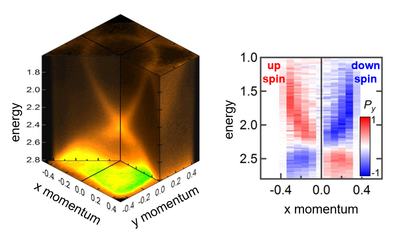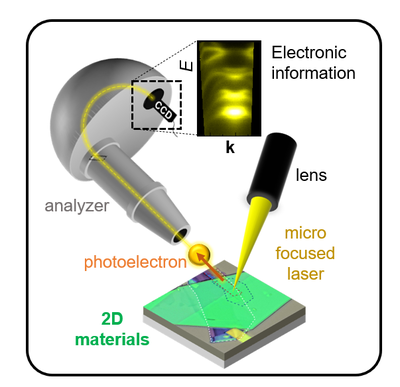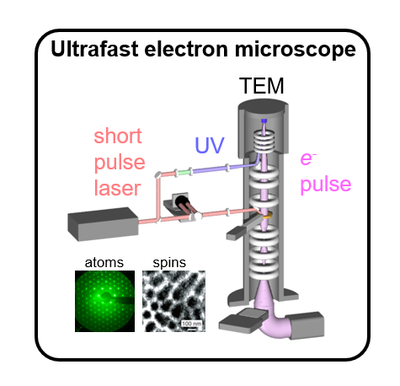Research
- Quantum Phase Control
- Advanced Materials Research
- Materials Science using Quantum Beams
- Optical Spintronics
- Quantum Material Thin Film Devices
- Theoretical Materials Design
- Controlling the Wave-like Properties of Electrons
Materials Science using Quantum Beams
Photoelectron spectroscopy

Photoelectron spectroscopy is a measurement technique that allows us to obtain the energy, momentum and spin of electrons inside a material. In crystals with periodic structures, the momentum information is particularly important, but there are only a few methods to obtain this information directly. Our goal is to measure the electronic states of various new materials by photoelectron spectroscopy using various photon beams such as lasers and synchrotron radiation, to elucidate their quantum properties, and to derive new material functions that will contribute to solving future problems.
Micro-focused photoelectron spectroscopy and 2D materials science

By using scotch-tape to repeatedly peel off the layers of material bound together by a weak force called van der Waals, an atomically thin sample can be obtained at the end. The two-dimensional material sheets produced in this way exhibit physical properties that cannot be found in solids, and depending on how they are stacked, they produce a treasure trove of unprecedentedly diverse quantum phenomena, including unconventional superconductivity and unique magnetic, electrical, and phonon properties. However, such samples are very small in size, which is a bottleneck for precisely understanding their properties. We are working on the investigation of two-dimensional materials by photoelectron spectroscopy using a micro-focused ultraviolet laser beam.
Ultrafast phenomena in non-equilibrium state

In non-equilibrium states of matter, tiny particles and quanta such as electrons, atoms, spins and phonons exhibit high-speed dynamics. The understanding of such ultrafast phenomena is extremely important for creating functions using excited states and the control of quantum states. In our laboratory, we are developing measurement systems such as ultrafast time-resolved electron diffraction and electron microscopy by combining short-pulsed laser and electron beam analysis techniques. By using these systems, we can visualize the motion of crystals, atoms, and ions in materials, and also multi-probe the high-speed change of electronic and magnetic states on the nanoscale in real time (femtosecond to microsecond). With this we aim to pursue the understanding of the non-equilibrium state of matter towards the control of quantum states.